Our Two Cents: What we’d say to automakers, if we could time-travel
I was introduced to the butterfly effect by Ray Bradbury’s book A Sound of Thunder, and it forever altered the way I considered historical moments. Or any moment in time, as the butterfly effect could make a serious impact on our lives as automotive enthusiasts, too. What if Henry Ford never bullied his son Edsel? What if Porsche killed the 911 when they introduced the 928? In this episode of Our Two Cents, I asked the staff here at Hagerty Media to consider such scenarios.
There are lot of these butterfly effects in automotive history, and one of the more forgettable examples is the time Infiniti made the Mercedes GLA into a QX30 crossover utility. Will someone on our team warn Infiniti not to make this Mercedes? Or will they warn Mercedes not to make this Infiniti? Probably not, so let’s see what they come up with.
Killing street cars/mass transit?
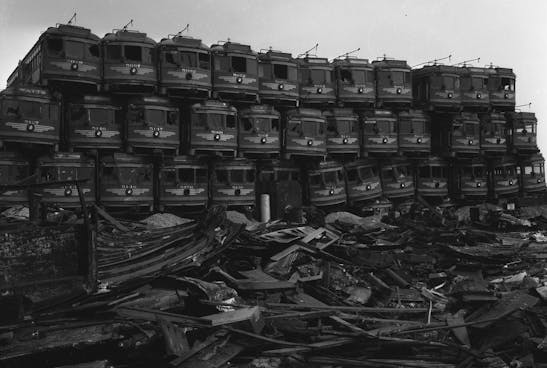
For the record, this is a terribly complex issue and the automakers were only one part of the equation. But that doesn’t take away from the following message:
Dear automakers,
Please go back in time and don’t buy all the public transportation companies in our big cities (buses, trollies, trains, etc.). And then definitely don’t intentionally make them awful so people were forced to buy cars!
— Ben Woodworth
That wretched diesel!
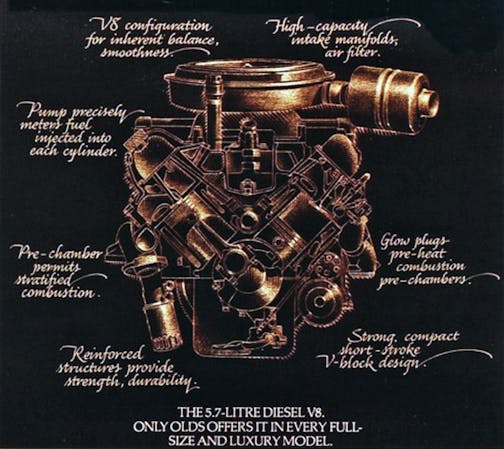
Dear GM,
Do not, under any circumstances, make a diesel engine based on a gas engine.
I owned a thoroughly used 1981 Olds Cutlass with the infamous 5.7-liter diesel, and there is a reason I got it so inexpensively: It sucked. It seems like my experience and that of countless Americans effectively killed any chance diesel power in passenger cars had here.
Swing out on the swing axle
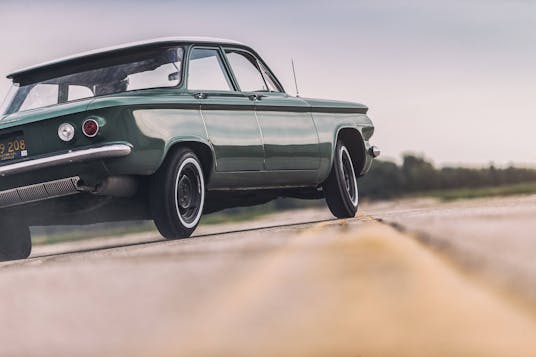
“Chevrolet, please save yourself the trouble and design the first generation Corvair with four-wheel independent suspension. No swing axle, no camber compensating spring. Feel free to leave the rest alone but the headache you will create with putting that swing axle design in will be significant and you would be best served by avoiding it all together. Please. You have a winner on your hands once that change is in place. No swing axles. Let that lawyer target the VW Beetle or something else. I know, that makes no sense now, but soon enough you’ll see–and I hope you believe me now because it only gets worse on the path you’re on.” — Kyle Smith
Ferrari vs. Nobody
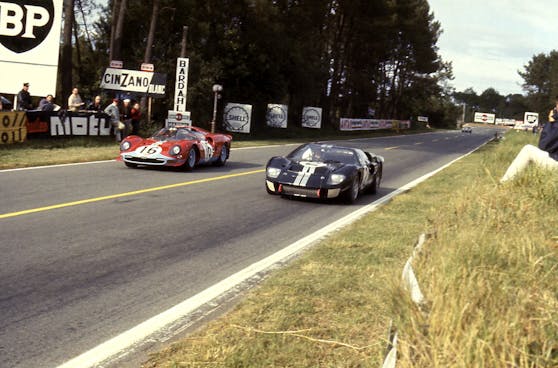
Dear Enzo,
Maybe don’t be a jerk to Ford.
Cross out this Murano
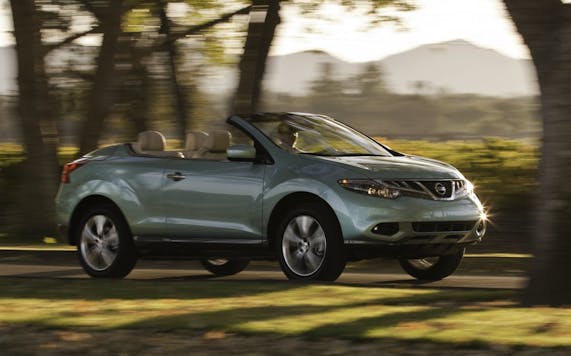
I would advise Nissan’s decision-makers to ignore whoever came up with the idea of a Murano CrossCabriolet. — Alex Sobran
Just because it’s good for General Motors…
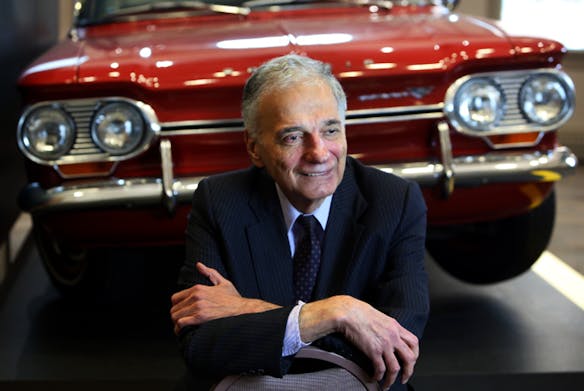
Dear GM of the 1960s:
Don’t mess with Ralph Nader, and don’t resist making cars safer.
EV1: the butterfly we stepped on
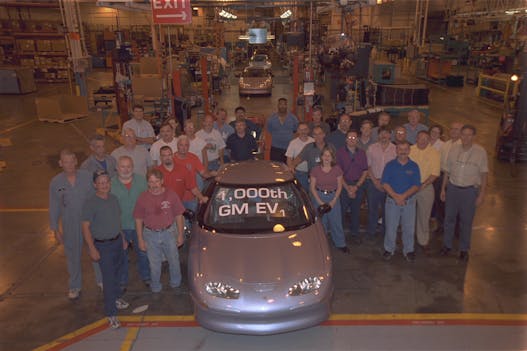
Hello General Motors,
I have come to the fourteenth floor to keep the EV1 program around so Tesla will never come to life. This a long play, and I know how much you guys hate experimenting here, but your failed partnership with Fiat is gonna cost you dearly just a few years from now. Have a look at Tesla’s stock 20 years from now: this can be you! And it is the right long play for your business.
More electricity, less fire
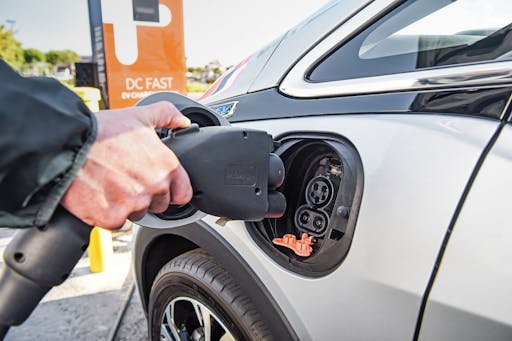
Chevrolet,
Fireproof the Bolt.
LS everything, sooner?
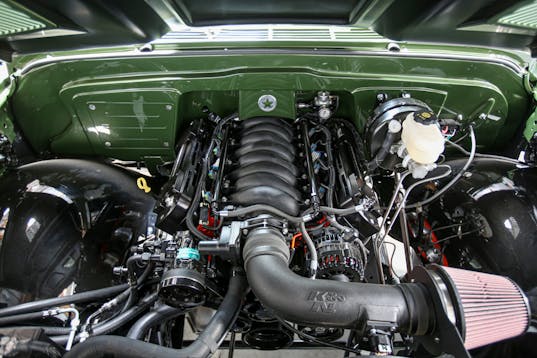
I’d take an iron LQ4 head back in time to 1954 and hand it to Ed Cole, save everyone a whole lot of work. — Brandan Gillogly
The Aztek, for a new reason
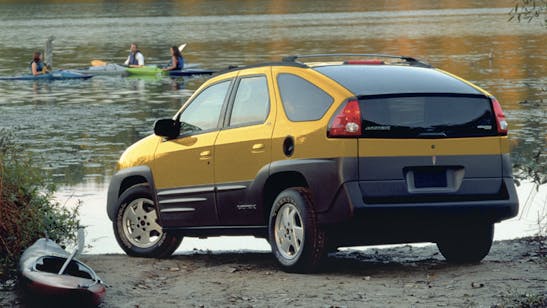
I was working at Car and Driver when the Pontiac Aztek was unveiled in 1999. I had an early look at it, and told a friend who was a Pontiac exec that it was a genuine stretch, and for goodness sakes not to show it in yellow with the little blackwall tires at the unveiling. They did, of course; it was pretty much a laughing stock for its entire model run, or at least until they removed all the plastic cladding, which made a huge difference. I wrote then that I at least respected the fact that Pontiac took a chance, but I knew when I first saw it that it was in for a tough reception. — Steven Cole Smith
***
Check out the Hagerty Media homepage so you don’t miss a single story, or better yet, bookmark it. To get our best stories delivered right to your inbox, subscribe to our newsletters.
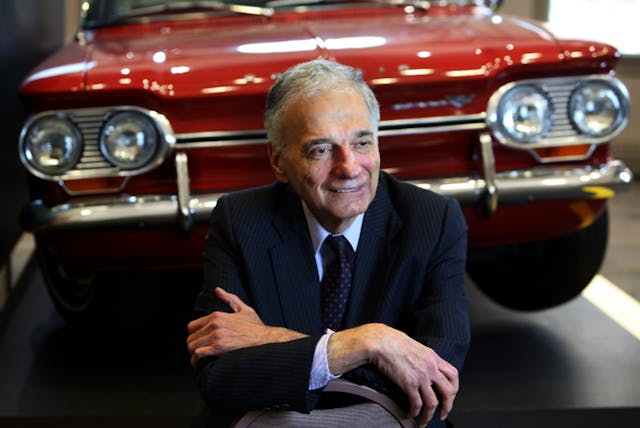
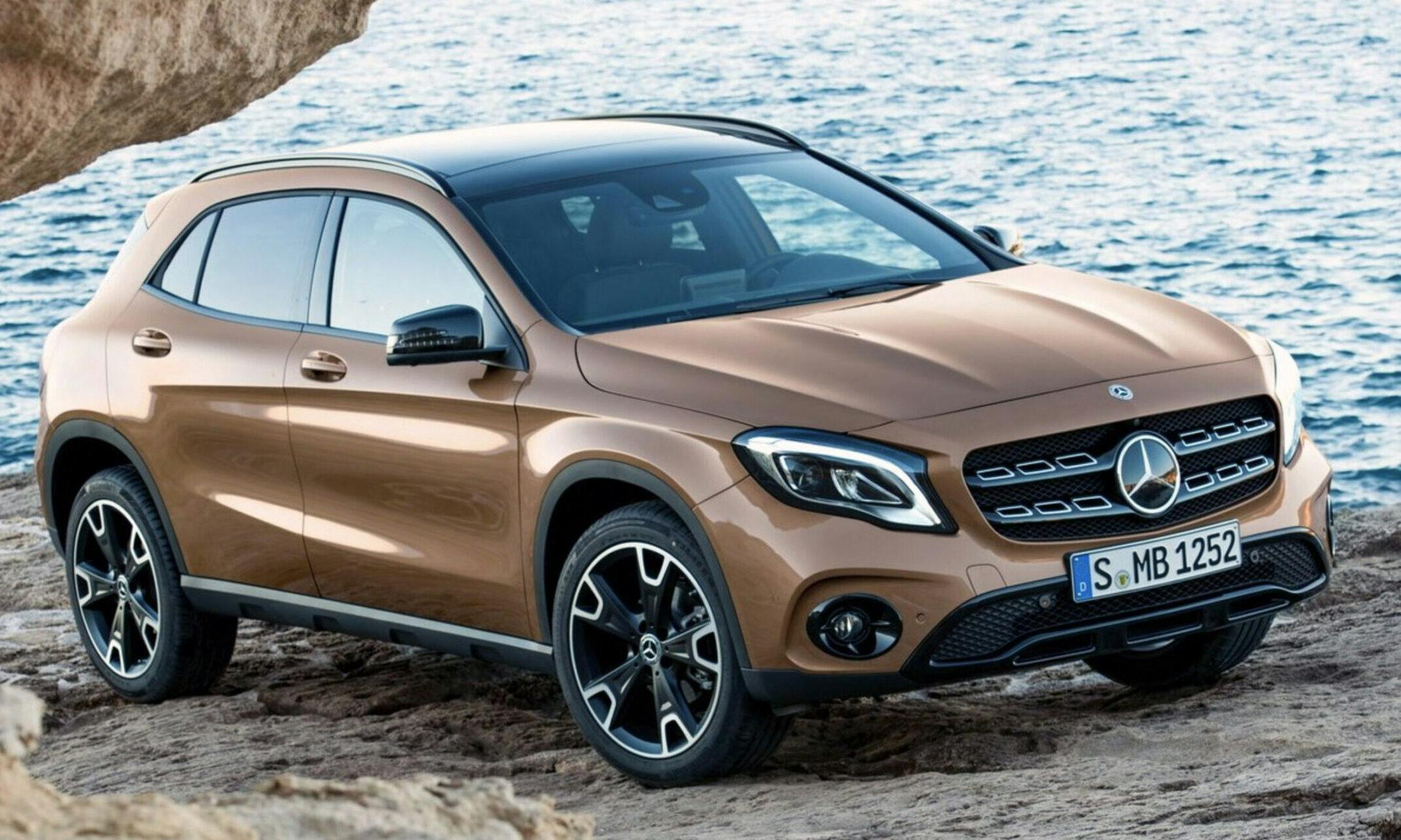
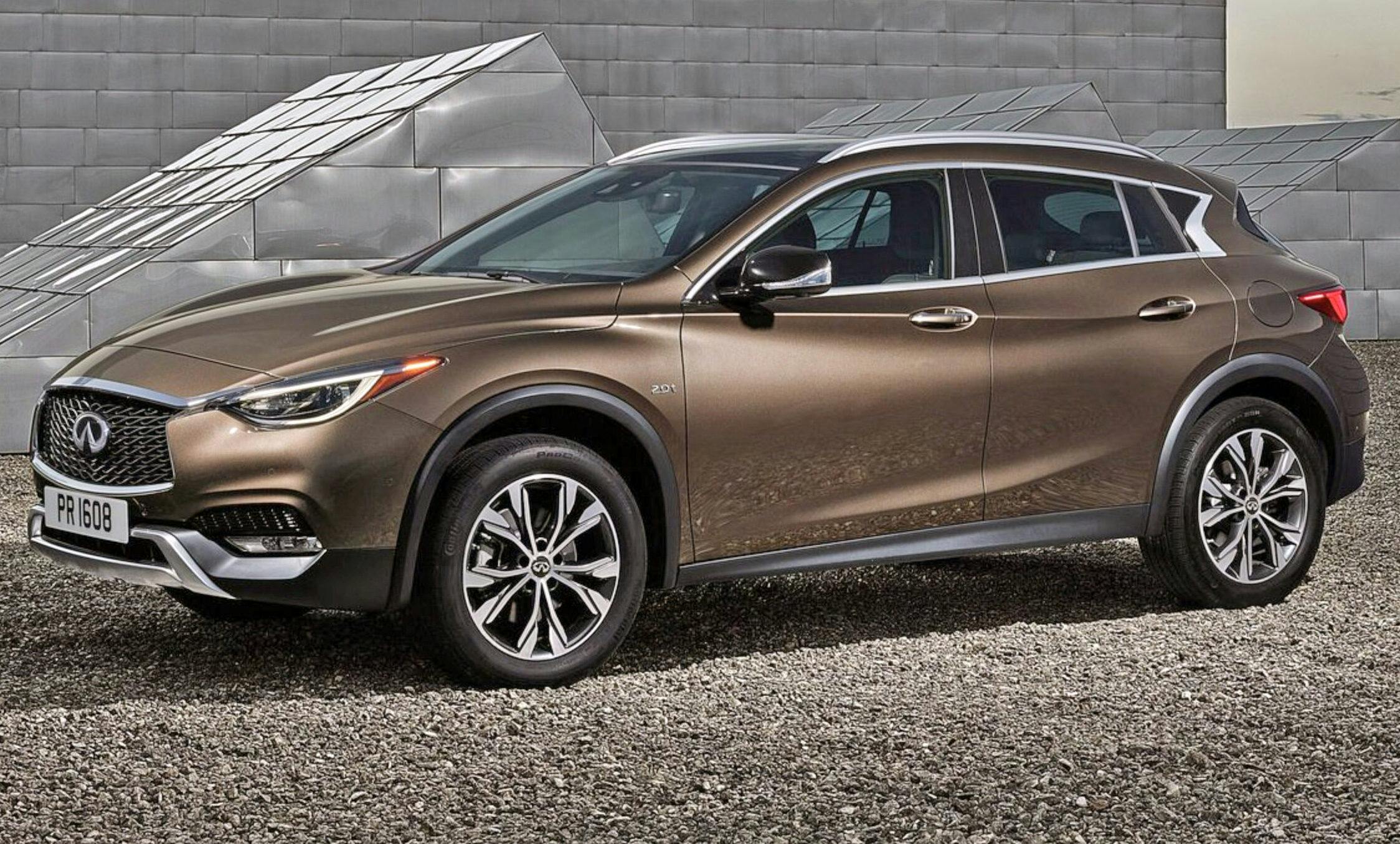


Cadillac, don’t put Aluminum blocks that can’t be rebuilt in your cars and not make a valid replacement when it will fail and it will fail. I have a beautiful condition 2000 Eldorado ETC 32V Northstar V8 that will be going to a salvage yard with Californias buyback program next month and it should be a collectable and saved, but only used engines that will eventually fail at any given moment are available. This will make them extra rare cars someday
Hey Chrysler, don’t downsize your 1962 cars (even though I love my ’62 Fury, the market sure didn’t).
Alan, you’re kidding, right? The Valiant and Dart were the huskiest of the compact/rationally sized cars many preferred. The Slant Six was among the 30 best automotive engines in history according to a 1982 poll of SAE members. Lost track of how many impoverished grad students owed their reliable wheels to Darts and Valiants long past their supposed expiration dates.
1982 was 41 years ago and a lot has happened since then. That’s an odd poll to cite.
I believe you missed his focus. The 1962s he referenced were the full size cars that were downsized. Happened because a ChryCo person overheard part of a conversation by some GM folks talking about what would become the A bodies and mistook it for a size reduction of the GM full size line.
This mistake led to a rushed downsizing of a design that had issues translating to a smaller size during a time while the VP of Design/Styling, Virgil Exner, was on medical leave. When it turned out that the downsized ChryCo’s were a mistake that led to a board room fight where they made Exner take the fall for the decision dictated by others.
Thank you, Jeff. Many here like to react before reading.
I can’t, for the life of me, understand in the least why everyone hates on the Aztek so much. It was no worse looking than all the boring pill boxes people drive instead. And it was innovative.
I have to agree. While the production version didn’t look like the concept car, it’s not really as ugly as people think. Maybe, like you said, it was just ahead of its time. Plus, from what I’ve read, people that actually bought them really like them and think they are a good car.
I agree it is not as ugly as people think, it is actually uglier.
If they had only left off all that gray plastic cladding.
Don’t buy the Interurban railways and shut them down just prior to WWII.
hyperV6 has it right.
I wish GM & Ford had given us the modern V8 sedans, wagons, etc. they sold in Australia. I would have bought one if there had been some choice in the market.
…..and their UTEs!!!
Hey Ford, put a metal plate between the bolts and the fuel tank on the Pinto. And don’t turn the Cougar into a family car.
To any and all American auto executives;
“Listen to Edwards Deming and follow his precepts”.
Mark, Amen!
Absolutely! Maybe if Detroit had of listened he would not have gone to the Japanese and let them become his desciples.
What if GM had designed the Corvair starting with the second gen rather than the Chevy 2. Then along with the Corvette go after the VW/Porsche in a double market approach. Love those Corvair’s …
GM; Tell historians to quit propagandizing and presenting as fact the thoroughly debunked myth about the deliberate dismantling of urban street cars by you (GM), Firestone etc.. It’s fine cocktail party banter by virtue signalling swells that never had to ride a bus, or mingle with the Hoi Polloi… or step out of their comfortable social bubble.
Street cars were obsolete 19th century technology, most bleeding red ink, and in the way.
Gotta disagree with you, sir. Next time you find yourself sitting still in a rush-hour bumper-to-bumper urban freeway traffic jam – mostly surrounded by single-occupant vehicles – glance over at the electric rail cars whisking their passengers to work or home. Urban rail has its place.
I do… here, they’re mostly empty, take the place of maybe a dozen busses, and have high crime statistics. Furthermore, they’re heavily subsidized. Some riders get further incentives from their workplace. Sure, they go by traffic, but you first have to get to the station, then arrive at another station. What about that first and last mile (or five, for that matter). Take the Shoeleather Express? Uber? Transfer to a bus stop and wait? What if you wanted to stop and shop on the way home? Can you take more than a briefcase?
If they’re so great, people would ride them. They only work in specific narrow, high population corridors.
The auto is still most efficient; point A to B with no nodes. The people on the freeway know that.
Absolutely. Ben Woodworth’s opening plea to automakers not to kill the trolleys, street cars, interurbans was deservedly placed atop this list. Horrendous, short-sighted, greedy mistake and we’re all paying for it now. As an ex-NYer now Bay Arean, can tell you how much more relaxing and economical to take the train, read, maybe even get some work done, than suffering car killing traffic.
Also, many of us did not lavish time, energy, lucre rejuvenating vintage cars only to expose them to a halting lockstep on a concrete conveyor belt. No pleasure there. In a nation crushed by a third of a billion people, 41 million babies onboard California alone, mass transit’s the only salvation for those of us wanting to now and then enjoy our old cars.
Su8overdrive- you lived in the two places where a narrow high population corridor made public transit viable. That’s fine… but it’s not the whole country.
The bulk of old trolley systems became unviable. They were not deliberately bought and dismantled for any nefarious purpose. That’s an urban myth.
Here in Taxachussets, home of LiarHontas and a governor who would gladly cross big red X’s through the Second Amendment with a 12″ marker if she could, Boston’s public transit system, known as the T, is about 75-80% tax payer funded. They now say the system needs $25Billion in updates. $25 BILLION. Point is America is not really all that fond of high taxes paying for other people’s transportation so the proliferation of privately owned vehicles reflects what the people want. So car makers got greedy and leveraged American wants into some nifty profits but lost sight of the idea that people eventually figured out others were doing it better, cheaper, more efficiently. The 1970’s was a wake up call but it seems the big 3 hit the snooze button. Should have gotten out of bed instead of rolling over until it was way too late.
Some may disagree, but I think the greatest error committed by GM was abandoning its original marketing structure with Cadillac at the top and Chevrolet at the bottom. GM allowed its various divisions to compete with one another rather than against Ford, Chrysler, and American Motors. Really dumb, but as they say, hindsight is 20/20.
Sajeev: Did you bang out this article 10 minutes before deadline? Great question but what a bunch of limp wristed left wing answers. EV1 love? Really? If the GM Diesel was a bad idea and killed demand in the US for diesel engines (cheap gas killed the diesel in the US), then the EV1 and it’s poor execution killed demand for EV’s (Tesla’s got off the ground from nothing because Elon Musk didn’t need to make a profit… That usually doesn’t work in business. Cheap gas killed the EV1 more than anything. ). Fireproof the Bolt? Really? Have they even sold enough Bolt’s for this to be a big problem? What an obscure vehicle to pick on. The Murano Cross-Cabrio? What an obscure vehicle to pick on. A good idea killed (Is the current Range Rover Convertible a bad idea?) by a terrible CVT transmission. I could go on but I have already wasted too much time on this ephemeral article. Hagerty… you can do better.
Can’t speak to everyone else’s comments, but I don’t understand your Diesel/EV connection. There was no EV demand until the EV-1 came out, and the people that bought (leased) it were so loyal to GM’s creation that they made a movie about it. There is no parallel with what happened with the Olds diesel. Even if the movie isn’t your cup of tea, it proves the market existed for the EV-1.
GM did electric cars right, and Tesla capitalized on that…becoming the darling of Wall Street and fancy city streets alike. Sure seems like a good market for GM to not exit!
For what its worth in the realm of EV discussion, with all sorts of assumptions and averages an EV electricity usage is about the same as 3-4 residential houses. Given that many locales have supply issues in the hot summers, you got to wonder how the EV will get charged if you got to decide between driving tomorrow or watching TV tonight with the heat or AC on while dinner is cooked on an induction range as your wife dries her hair after a shower.
That’s fair, but we are focusing on the EV-1 which was sold to specific people in specific zip codes decades ago. It was the start of something.GM created the market, then handed it over to Tesla on a silver platter. Hindsight is always 20/20, hence the creation of this article.
Out of curiosity, where is the “EV electricity usage is about the same as 3-4 residential houses” statistic coming from? I am interested in looking into that more.
Do not take these numbers for gospel but here is what I remember reading. A typical house uses aobut 13,000 KW hours a year, A typical ( 12,000-13,000 miles a year) EV uses about 4,000 KW hours per year. If you Google the topic, something like how much electricity does an EV use, you can find all sorts of comparisons and or course lots of variation so I sort of rounded what i recall as a summary
EV users are encouraged and incentivized to charge during off-peak hours. The cars themselves can be programmed to do so.
That being said, I live in an entitled, privileged suburb that houses lots of EVs. Knowing my neighbors, none of them drive enough to justify their constant supply of new EVs every three years. Most of them drive less than 30 miles a day and have a gas car to go on long trips.
It’s mostly a tech novelty for them.
Gasoline/Diesel is the most efficient fuel to propel an automobile. I don’t understand where these EV advocates think the extra power is going to come from. The same people that want EV’s will protest a new nuclear reactor. If you think you have brownouts now what will happen when several million people in your city are plugging in their cars to recharge. Try scheduling millions of people to charge their cars at certain “off-peak times”. I think there aren’t that many hours in the day. And since the largest proportion of electric power is coming from coal plants how is it going to reduce greenhouse emissions? We will need thousands of new nuclear plants to make EVs feasible. And if you think you can get by with your solar panels on your roof and/or windmills – go for it. BTW, if you think your roof replacement is expensive now, wait until you have to pay to remove your solar panels first to replace the roof, and then pay to have them replaced again.
Interesting comments. We all tend to forget making vehicles is about making a profit. Not an easy task.
Kyle’s comments on the Corvair swing axle were odd. I own two Corvairs and they are unique and fun. As far as the swing axle design, back then it was the ONLY practical IRS. Unfortunately GM did not manage to tame it’s IRS until 64 with a camber strap. By then the Corvair was a “sporty car” and sold for a profit while the Chevy II copy of the Falcon was the inexpensive compact. The 65 and newer Corvair got a version of the Corvette IRS and the swing axle was finally gone.
The fact is the Corvair made NO sense as a new compact as it was expensive to build. The Corvair was the result of Ed Cole’s dream and they were a financial disaster. Ford meanwhile looked at their European small cars and built the Falcon as a conventional car, just smaller. When GM learned the Falcon was cheaper to build they went on a panic cost cutting episode and eliminated the front sway bar, even though the engineers warned them not to, and settled on underinflated front tires to make the car over steer before the rear end went out. A horrid fix. The Corvair was not a profitable economy compact and only survived as an upscale sporty car (that made money for GM). Then the Mustang arrived and the Corvair was done. Fact is Nader did little to kill the Corvair.
The 1965 Corvair Corsa Turbo was so good that 9 years later Porsche copied it for their 930 Turbo. Rear mounted, flat 6, air cooled, true 4 wheeled independent suspension, 4 speed trans, Turbocharged, seemed to be a great idea for Porsche. They had 9 years to make it a better Corsa.
Even Mercedes was using swing axles during the time of the Corvair. It had a lower pivot point design to be different but it was still a swing axle.
I’d say make your cars friendly so the owner can work on them if they want. Also make sure they are safe when on a lift.
People do not even wash their cars these days, never mind maintenance
Whoever designed the Subaru Tribeca, I hope you were “let go”…
Dear Honda: protect and honour your heritage by keeping parts available for cars older than 10 years.
Yes, please. My routine car is a ’02 stick Civic with only 116,000 miles (prefer to bike unless it’s raining; affordable exercise in the win-win-win). But replacing the fuel pump just cost me $700 all up. My girl drives an immaculate ’01 Miata that just turned 100,000, terrific genuine sport car by any yardstick, but you’d think you were paying for BMW/Mercedes parts, the few times something’s required.
Such cars’ll run forever, given half a chance and available parts. BTW, L.J. K. Setright, who knew what he was about, cited Chrysler (of yore) and Honda as his two most respected marques.